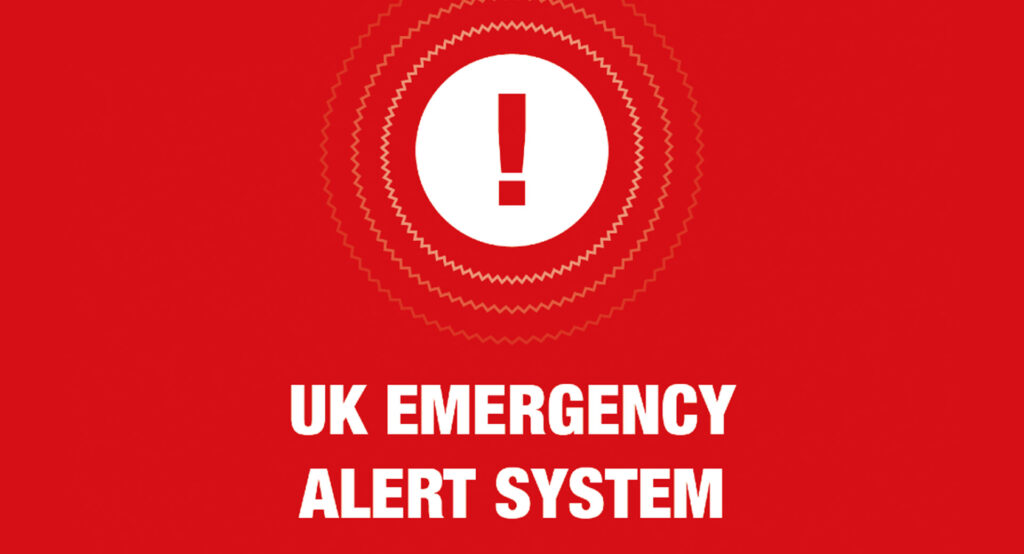Emergency alert test and a list of 15 facts
Emergency alert tests are an essential part of ensuring public safety, but have you ever wondered what goes on behind the scenes? From the ear-piercing screech of a test alert to the underlying technology that makes it all possible, there’s more to these tests than meets the eye.
In this post, we’re going to take a closer look at emergency alert tests and unveil 15 eye-opening facts that you probably didn’t know.
Whether you’re a concerned citizen or an emergency management professional, this post is a must-read. So sit tight, buckle up, and get ready for a wild ride as we explore the ins and outs of emergency alert tests!
Emergency alert tests are a crucial part of emergency management and preparedness.
1 As they help to ensure that the public can receive important information quickly and efficiently during a crisis. By conducting regular tests of the emergency alert system, emergency management professionals can identify any potential issues or shortcomings in the system and make necessary improvements.
This, in turn, helps to ensure that the system is reliable and effective when it is needed most.
The Emergency Alert System (EAS) in the United States is a national warning system that is designed to enable the President of the United States to address the American public during a national emergency.
2 It is also used by state and local authorities to send emergency messages to the public via television, radio, and other communication channels. The EAS is operated by the Federal Emergency Management Agency (FEMA) and is designed to provide timely and accurate information to the public during emergencies, such as natural disasters, severe weather events, and other threats to public safety.
The Emergency Alert System (EAS) is managed by the Federal Emergency Management Agency (FEMA) in the United States.
3 FEMA is responsible for overseeing the development, implementation, and maintenance of the EAS, as well as ensuring that the system is operating effectively at all times. This includes conducting regular tests of the EAS to ensure that it is functioning properly and that emergency messages can be delivered to the public in a timely and accurate manner.
FEMA also provides guidance and training to state and local authorities on the use of the EAS during emergencies.
Emergency alert tests are typically conducted on a regular basis to ensure that the emergency alert system is working properly and that the public can receive timely and accurate information during an emergency.
4 The frequency of these tests can vary depending on the jurisdiction, with some areas conducting tests on a weekly basis, while others may do so on a monthly or quarterly basis.
These tests are an important part of emergency preparedness and help to ensure that the system is functioning properly and that the public can be alerted in the event of an emergency.
During an emergency alert test, a message is transmitted with a unique tone that is designed to grab the attention of the public.
5 This tone is commonly known as the Emergency Alert System (EAS) attention signal or the Specific Area Message Encoding (SAME) attention signal. The tone is followed by a voice message that provides important information about the nature of the emergency, as well as any instructions or actions that the public should take in response to the emergency.
The unique tone and voice message are designed to be distinctive and easily recognizable, even in situations where there may be a lot of background noise or distractions.
The tone used during an emergency alert test is often referred to as the “alert tone” or the “attention signal.”
6 This tone is a distinct, attention-grabbing sound that is designed to immediately capture the public’s attention and signal that an important emergency message is about to be broadcast.
In the United States, the alert tone is followed by a voice message that provides important information about the emergency, including what the emergency is and what actions the public should take in response.
The use of the alert tone is an important part of the emergency alert system, as it helps to ensure that important messages are received and acted upon quickly and efficiently.
There are several different types of emergency alerts that can be issued through the Emergency Alert System (EAS).
7 These include weather alerts, Amber alerts, and alerts related to national security.
Weather alerts are issued in the event of severe weather conditions such as tornadoes, hurricanes, and flash floods. These alerts provide important information about the severity and location of the weather event, as well as any instructions or precautions that the public should take to protect themselves.
Amber alerts are issued in the event of a child abduction or other dangerous situation involving a child. These alerts provide information about the child, as well as any details about the suspected abductor or vehicle involved in the incident.
Alerts related to national security are issued in the event of a terrorist attack, military attack, or other threat to national security. These alerts provide important information about the nature of the threat, as well as any instructions or actions that the public should take to protect themselves.
Overall, the goal of these emergency alerts is to provide the public with timely and accurate information about emergencies so that they can take appropriate actions to protect themselves and their families.
One of the reasons for conducting emergency alert tests is to test communication systems and equipment to ensure that they are functioning correctly.
8 During an emergency alert test, different types of equipment, such as transmitters and receivers, are checked to ensure that they are properly configured and functioning as expected. Any issues that are identified during the test can be addressed and corrected to help ensure that the emergency alert system will work effectively during an actual emergency.
In addition, conducting regular tests helps to familiarize emergency management personnel and the public with the emergency alert system and the procedures that should be followed during an actual emergency.
The Federal Communications Commission (FCC) is the agency responsible for overseeing the Emergency Alert System (EAS) in the United States.
9 The FCC is responsible for ensuring that the EAS is operating effectively and efficiently, and that it is able to provide timely and accurate information to the public during an emergency.
To help ensure that the EAS is operating as intended, the FCC conducts regular inspections of EAS equipment and systems to ensure that they are functioning properly. The FCC also works closely with other federal agencies, such as the Federal Emergency Management Agency (FEMA) and the National Weather Service (NWS), to coordinate emergency communications and alerts across different government agencies and jurisdictions. Overall, the FCC plays a critical role in ensuring that the EAS is able to provide timely and accurate information to the public during an emergency.
Emergency alert tests can be issued at different levels depending on the nature and scope of the emergency.
10 For example, a local emergency alert may be issued for a weather event affecting only a specific area, while a statewide emergency alert may be issued for a larger-scale event, such as a natural disaster that impacts multiple counties or regions.
At the national level, emergency alerts may be issued for events that pose a significant threat to public safety, such as a terrorist attack or a major natural disaster. In these cases, the President of the United States may issue a national emergency alert using the Emergency Alert System (EAS) to provide critical information and instructions to the public.
Regardless of the level at which they are issued, emergency alert tests are an important tool for ensuring that the public is able to receive timely and accurate information during an emergency. They help to familiarize people with the alert system and prepare them for how to respond in the event of an actual emergency.
The primary purpose of emergency alert tests is to help ensure that the public is informed and prepared in the event of an emergency.
11 By conducting regular tests of the alert system, authorities can verify that the system is working properly and that emergency messages can be quickly and effectively transmitted to the public in the event of an actual emergency.
In addition to testing the technical aspects of the alert system, emergency alert tests also serve as an opportunity to educate the public about the types of emergencies that may occur and what steps they should take to stay safe. For example, emergency alerts may provide instructions on evacuation routes, shelter locations, or other important information that can help people make informed decisions during an emergency.
Overall, emergency alert tests are a critical tool for helping to ensure that the public is informed and prepared in the event of an emergency, and they play an important role in keeping communities safe and resilient.
During an emergency alert test, it’s important for citizens to pay attention to the message and take appropriate action as necessary.
12 While an emergency alert test is not an actual emergency, it’s still important to take the message seriously and follow any instructions that are provided.
For example, if an emergency alert test is issued for a tornado warning, citizens should take the opportunity to review their emergency plans and identify a safe location where they can seek shelter in the event of an actual tornado warning. By taking these steps during an emergency alert test, citizens can help ensure that they are prepared and ready to take action in the event of an actual emergency.
In addition to paying attention to the message and taking appropriate action, citizens can also provide feedback to local emergency management officials about the effectiveness of the alert system. By sharing their experiences and insights, citizens can help emergency management officials identify areas for improvement and make the alert system even more effective in the future.
Emergency alert tests are just one component of a larger emergency preparedness and response plan.
13 While emergency alert tests are important for helping to ensure that the public is informed and prepared in the event of an emergency, they are just one part of a larger system that includes many different components.
An effective emergency preparedness and response plan may include a range of activities and resources, such as training and education programs, emergency drills and exercises, communication systems, emergency shelters, and response teams. By developing a comprehensive plan that incorporates all of these different components, communities can be better prepared to respond to emergencies and minimize the impact of disasters.
In addition to emergency alert tests, other important elements of an emergency preparedness and response plan may include:
- -Developing clear and effective communication protocols
- -Identifying and coordinating with key stakeholders and partners
- -Establishing clear roles and responsibilities for emergency response teams and personnel
- -Conducting regular training and exercises to maintain readiness
- -Continuously evaluating and updating the plan based on changing risks and hazards.
By taking a comprehensive approach to emergency preparedness and response, communities can help ensure that they are ready to respond to emergencies and protect the safety and well-being of their citizens.
While emergency alert tests are an important tool for disseminating emergency information, they should not be relied upon as the sole means of receiving that information.
14 It’s important for citizens to stay informed through a variety of sources, including local news outlets, social media, and official government websites.
In the event of an emergency, it’s possible that the emergency alert system may not be able to reach everyone, especially if the emergency is widespread or if there are technical issues with the system. By staying informed through multiple channels, citizens can increase their chances of receiving critical information and taking appropriate action.
In addition to traditional sources of information like local news and social media, many communities also have their own emergency notification systems that can be used to alert citizens about emergencies. These systems may include phone calls, text messages, or email alerts. Citizens should check with their local emergency management office to learn more about the emergency notification systems in their area and how they can sign up to receive alerts.
Overall, it’s important for citizens to stay informed and be prepared in the event of an emergency. By taking proactive steps to stay informed and prepared, individuals and communities can help minimize the impact of emergencies and keep themselves and their loved ones safe.
Emergency alert tests are an essential tool for emergency management professionals to ensure that they can communicate critical information to the public quickly and effectively.
15 Emergency alert tests are a crucial tool for emergency management professionals to test the effectiveness of their communication systems and ensure that they are ready to quickly and effectively communicate critical information to the public in the event of an emergency.
These tests provide an opportunity to identify and address any issues or weaknesses in the system before a real emergency occurs. This allows emergency management professionals to fine-tune their communication strategies and ensure that they are able to reach as many people as possible with critical information.
Moreover, emergency alert tests can help to raise public awareness and educate citizens about emergency preparedness. By experiencing these tests and understanding how the system works, citizens can become better prepared and know what to expect in the event of an emergency.
Overall, emergency alert tests are a critical component of emergency preparedness and response efforts. They play an important role in ensuring that emergency management professionals are prepared to communicate critical information quickly and effectively, and they can help to raise public awareness and educate citizens about emergency preparedness.



